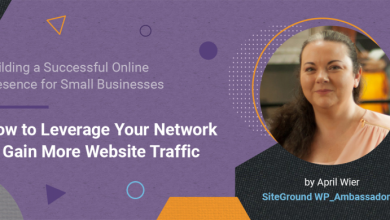Journey of an Online Buyer 2022 (Free Guide)

Journey of an Online Buyer 2022 (Free Guide)
Table of Contents
This blog post outlines SiteGround’s Journey of an Online Buyer infographic. Download the full guide to learn about the shifts in customer behavior and how to prepare your website for them.
With consumers changing the way they shop, have you changed the way you sell? Buyers today are more informed, involved, and connected than ever before. And in today’s digital landscape, the buyer’s journey has taken on new shapes and forms. It is no longer a linear process but a complicated web of touchpoints and interactions. To keep ahead of the competition as a small business and website owner, it’s critical to grasp this new buyer’s journey online.
What is the buyer’s journey?
The buyer’s journey is the process consumers go through, from initial awareness to final purchase. It illustrates how each step leads to the next to ensure you are aware of the actions that cause potential clients to either make a purchase, or back out of it. By understanding the buyer’s journey, you can better anticipate the needs of your customers and provide them with a seamless experience from start to finish.
The three stages of the buyer’s journey
It’s up to you to observe how potential buyers react to your selling approach and determine precisely where to focus your marketing and sales efforts. The buyer’s journey is mapped out in three stages. Each stage allows for distinct interactions between you and your users.
Awareness stage

During the awareness stage, the buyer becomes aware of a problem or challenge they face. They will then begin to search for solutions to that problem. Your job during this stage is to make sure you are visible to the buyer and that they are aware of your product as a solution to their problem.
Consideration stage

The consideration stage is when the buyer narrows their options and compares different solutions. Usually, this happens on your website. During this phase, it is your responsibility to give the customer the best user experience possible, which entails having a fast and secure website. Also, give them more information about your product and how it compares to competing products.
Decision stage

The decision stage is when the buyer finally chooses a solution. Your job during this stage is to make the purchase process as easy as possible and address any final buyer concerns.
Your website’s role in the buyer’s journey
While the buyer’s journey may start elsewhere, such as with a Google search, a large part of it will happen on your website. This is why it’s essential to have a website optimized for SEO that provides a great user experience, including ultrafast website speed, security, and reliability. If you can do this, you’ll be able to guide the buyer through the journey and ultimately convert them into a customer.
The 2022 online buyer’s journey highlights

Online shopping has evolved beyond simply being more convenient
Online shopping has come a long way since its inception. What started out as a convenient way to search for items has evolved into a major part of the retail landscape. Consumers around the world were once skeptical about online shopping, but that has changed dramatically over time – especially after the pandemic. Statista reports that in 2021, retail ecommerce sales were 5.2 trillion US dollars globally. They estimate this number will grow 56% in the next years, amounting to 8.1 trillion by 2026.
Seasonal shopping now starts much earlier
In the past, people would wait until the last minute to do their holiday shopping. However, people now do their seasonal shopping much earlier. They have many more options to choose from online, and want to take their time to find the perfect purchase. This is due to several factors, one of which is the growth of online shopping. With the shopping season starting earlier and earlier each year, small business owners need to be prepared to accommodate early shoppers.
As advertising costs soar, brands prioritize building customer lifetime value
Building customer lifetime value is more important than ever. As advertising costs rise, brands are increasingly focused on creating long-term relationships with their customers. And that’s okay because we’re also seeing a shift in the way consumers choose from whom to buy. They’re much more likely now to purchase from companies with strong brands that identify with their consumers. It’s important to remember that sustainable growth comes from focusing on your customers. So you need to build a brand that customers can trust and foster a sense of community.
Download the full guide below to explore the changes in customer behavior and learn how to get your website visitors a step closer to the “buy” button on every step of their online journey.



